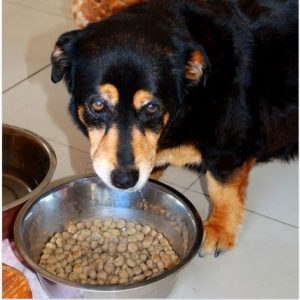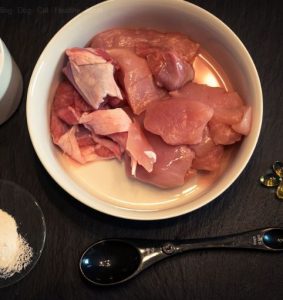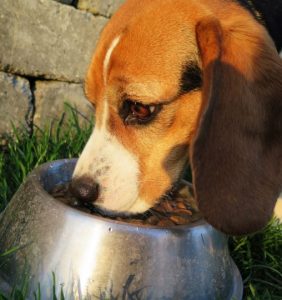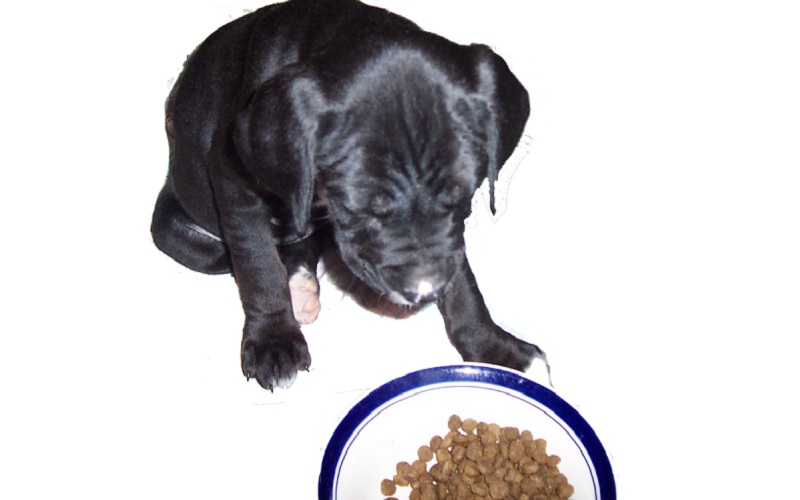Reading a dog food label is often intimidating for dog owners and many wonder whether by-products in dogs food are bad. The term by-product is often interpreted as something nefarious, a waste product that’s derived from a manufacturing process and therefore something of inferior quality. The term though need not to be bad news, actually, humans have been feeding dogs “by-products” for centuries. Veterinary nutritionists clear up the meaning of the word by-products so that you can make an informed decision on whether by-products in dog foods are good or bad.
 A Marketing Ploy
A Marketing Ploy
Have you recently seen a trend in food companies making statements on their packaging just to make their products stick out from the crowd? “We see more and more human foods displaying statements such as “No gluten, no GMO, no carbs, no fat, no trans fat, no antibiotics, no artificial colors, no preservatives etc.”
While many of these substances are harmful, and therefore food companies proudly display their effort to not include them in their foods, some ingredients are not really bad, unless you have a good reason to not want to consume some carbs or a little bit of extra fat.
In the dog food industry, something similar is going on. Dog food companies that do not include by-products in their foods will market their absence making dog owners assume that by-products must be something bad that should be therefore avoided like the plague. Add to this the power of the web, with websites spreading erroneous information. So are by-products really that bad? Let’s see what the experts in the field have to say.
Human Food Chain Leftovers
By-products in dog food plain and simply comprise what’s left from the human food chain, explains veterinary nutritionist Dr. Lisa Weeth. They are just parts of animals that the food market doesn’t use and therefore instead of tossing them away they’re used to make kibble for pets.
 If you think about it, it’s an environmentally conscious way to deal with leftovers and for dogs it’s a sustainable source of proteins that would otherwise be wasted.
If you think about it, it’s an environmentally conscious way to deal with leftovers and for dogs it’s a sustainable source of proteins that would otherwise be wasted.
So what exactly are these meat by-products? Let’s take a look at the definition provided by the The Association of American Feed Control Officials (AAFCO). According to AAFCO, meat by-products are simply the clean, non-rendered parts other than meat muscle tissue, that are obtained from slaughtered animals.
Meat by-products therefore consist of several organ meats such as livers, spleen, kidneys, lungs, brains, tripe and intestines (freed from their contents). Among by-products are also comprised things like bones, blood and fatty tissues. Contrary to want people assume, meat products do not include parts such as hair, horns, teeth and hooves. What animals are by-products from? By-products derive from meat that is sourced from cows, pigs, sheep or goats. If the meat by-products are derived from any other animals, the animal source must be identified.
Meat by-products are therefore not slaughterhouse waste, but they’re just s a product that’s produced secondarily to the main product in the same way as chicken stock is produced secondarily to from chicken meat, explains Dr. Rebecca L. Remillard, a board-certified veterinary nutritionist .
 Healthy Source of Protein
Healthy Source of Protein
While the idea of eating tripe or liver may gross many people out, for normal, healthy dogs, meat by-products are a good source of protein and nutrients. Indeed, meat organs are considered a delicacy in many countries other than the U.S. and organs are often what’s eaten first by wild canines because of their high nutritional value.
The only concern about meat by-products in dog food would be in the case of dogs suffering from liver disease, in which case consuming organs would be counterproductive, or dogs suffering from allergies to certain meat proteins, adds Dr. Weeth.
While by-products are a good source of protein, a word of caution is needed. Because the quality of by-products can vary, it’s important to choose food companies that put an emphasis on implementing stringent quality control standards and using only the highest quality ingredients.
“By-products (mainly organ meats and entrails) often provide more nutrients than muscle meats on a per weight basis and are important components and even delicacies of human diets in other countries.”~Lisa M. Freeman, veterinary nutritionist
References:
- DVM360: Veterinary nutrition: Easy as 1, 2, 3
- DVM360: Deciphering pet food ingredients (Proceedings)
- Cummings Veterinary Medical Center at Tufts University: Don’t be bothered by by-products
- American Feed Control Officials, What is in pet food



 A Marketing Ploy
A Marketing Ploy  Healthy Source of Protein
Healthy Source of Protein